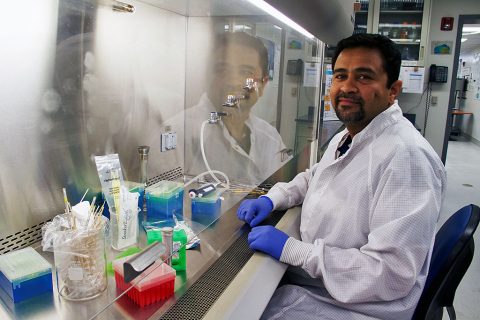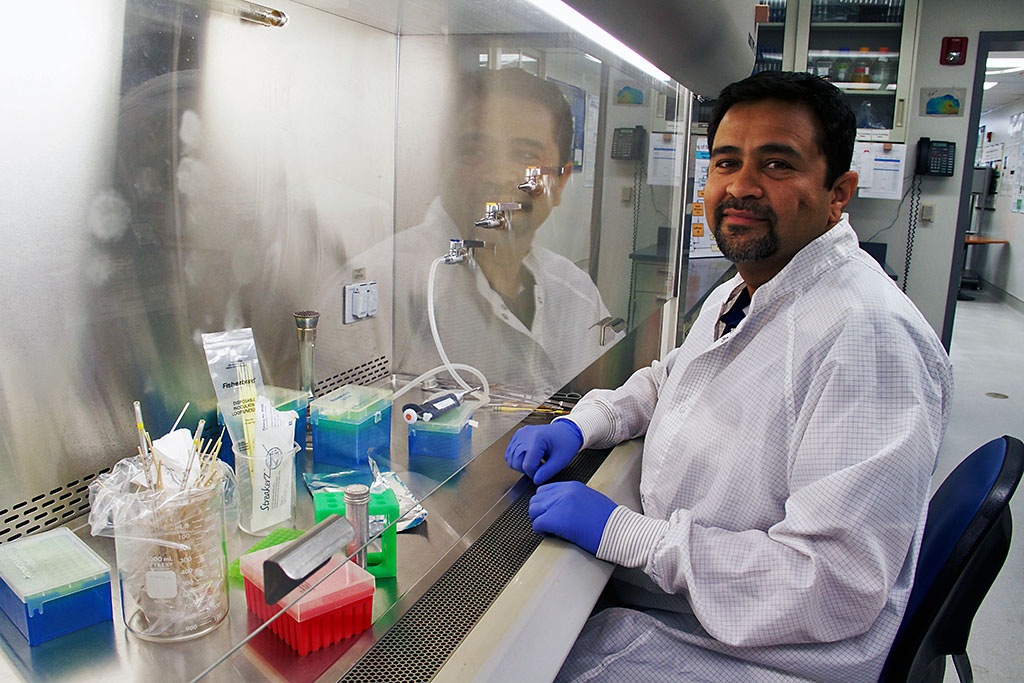Written by Elizabeth Landau
NASA’s Jet Propulsion Laboratory
 Pasadena, CA – Getting spacecraft ready for launch may have more to do with medical research than you think. For a new study on microbes that may be associated with a history of breast cancer, researchers at NASA’s Jet Propulsion Laboratory, Pasadena, California, employed the same sequencing and analysis methods used for examining bacteria in spacecraft assembly rooms.
Pasadena, CA – Getting spacecraft ready for launch may have more to do with medical research than you think. For a new study on microbes that may be associated with a history of breast cancer, researchers at NASA’s Jet Propulsion Laboratory, Pasadena, California, employed the same sequencing and analysis methods used for examining bacteria in spacecraft assembly rooms.
Those techniques were designed for planetary protection — ensuring that NASA spacecraft do not contaminate other worlds.

JPL collaborated with cancer researchers on the new study, published in the online journal Scientific Reports.
The multi-institutional team was led by Dr. Susan Love, chief visionary officer of Dr. Susan Love Research Foundation, Encino, California; Dr. Delphine Lee, director of the Department of Translational Immunology and of the Dirks/Dougherty Lab for Cancer Research of Providence Saint John’s Health Center’s John Wayne Cancer Institute, Santa Monica, California; and Vaishampayan of JPL.
Researchers have previously documented the existence of bacteria in the breast tissue. This new study marks the first exploration of a link between the breast ductal microbiome and breast cancer.
The breast ductal system contains the glands that produce milk and naturally secretes a substance called “nipple aspirate fluid” that researchers studied.
“We don’t yet know nearly enough about healthy and cancerous breasts — neither the microbial landscape nor the anatomy of the breast duct system,” said Love. “Yet, all breast cancer begins in the ducts, so clearly exploration is critical to discovering what causes breast cancer and how we can eradicate the disease.”
The research team found that the community of microorganisms in breast ductal fluid differed significantly between two groups — 23 healthy women and 25 women who had a history of breast cancer and had gone through treatment.
It was then analyzed with next-generation genomic sequencing, which has also been used for examining bacteria in NASA spacecraft assembly facilities. Mina Bashir, a doctoral student at the Medical University of Graz, Austria, played a significant role in the genetic analysis while interning at JPL.
“Collaboration between JPL space technology experts and medical researchers will continue to propel groundbreaking discoveries,” Vaishampayan said.
“This publication represents a success for JPL’s Medical Engineering Forum Initiative, which focuses on applying NASA technology for medical needs here on Earth,” said JPL’s Leon Alkalai, who is spearheading the initiative.
Though the study found a correlation between specific species of bacteria and women who have gone through breast cancer treatment, the cause of the bacterial population difference is unclear. Cancer, or cancer treatment, could contribute to these findings. More research is needed.
“We have known for decades that our immune cells and the cells that line our organs’ surfaces can react to microbial components,” said Lee. “These responses can trigger inflammation and immune responses, suggesting that this interaction might help the immune system monitor breast tissue for cancer, or that certain microbes could contribute to increased inflammation that leads to cancer development. There is still so much to explore.”



